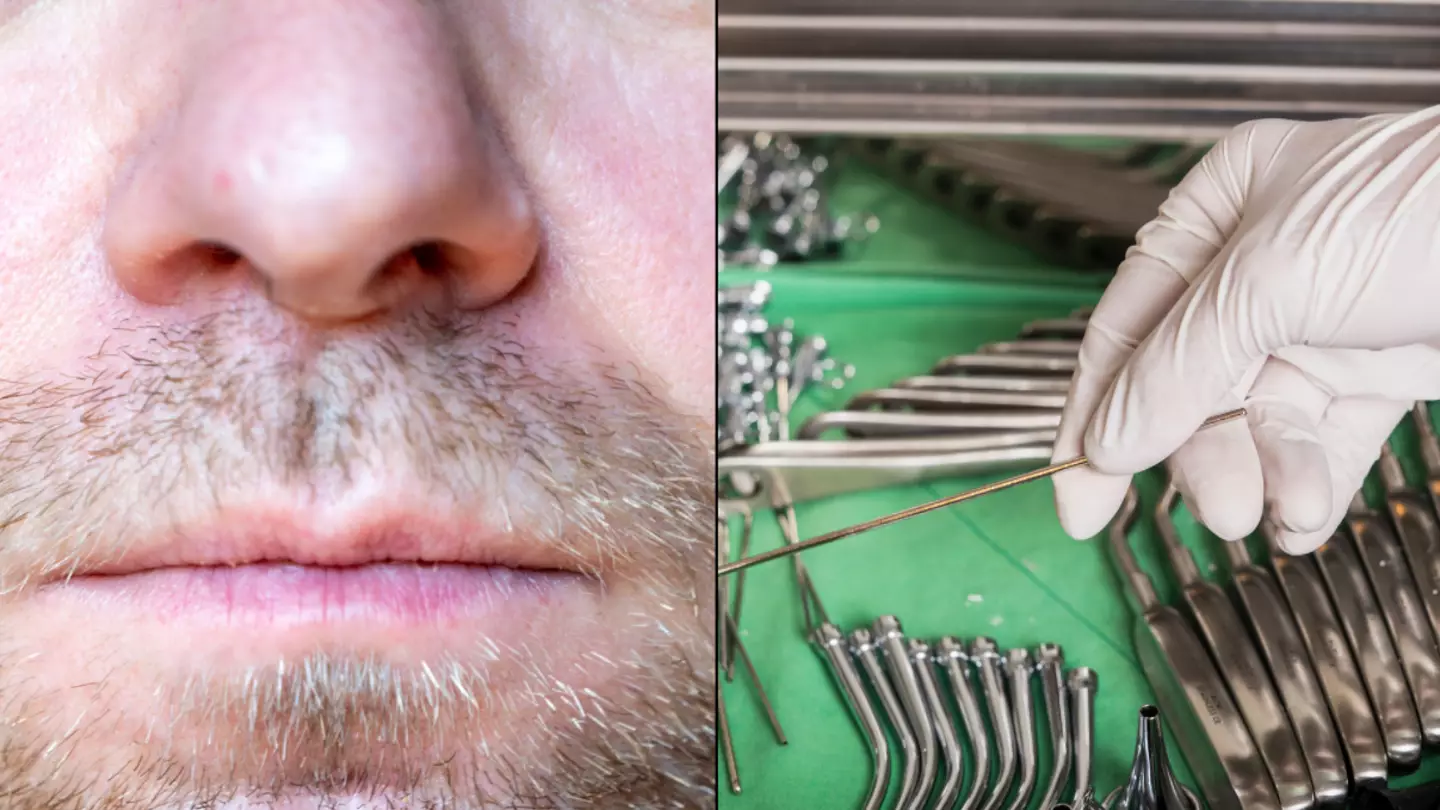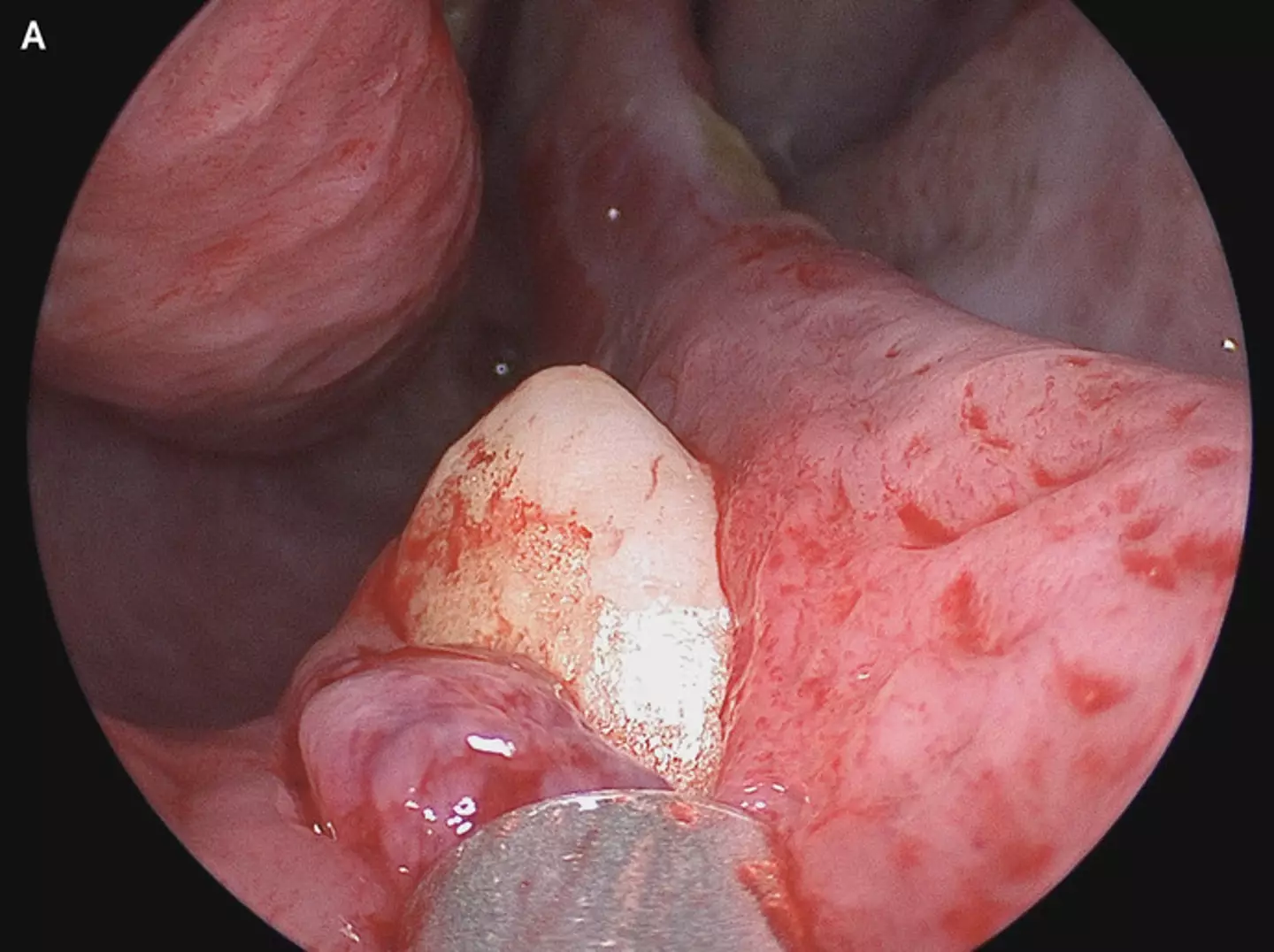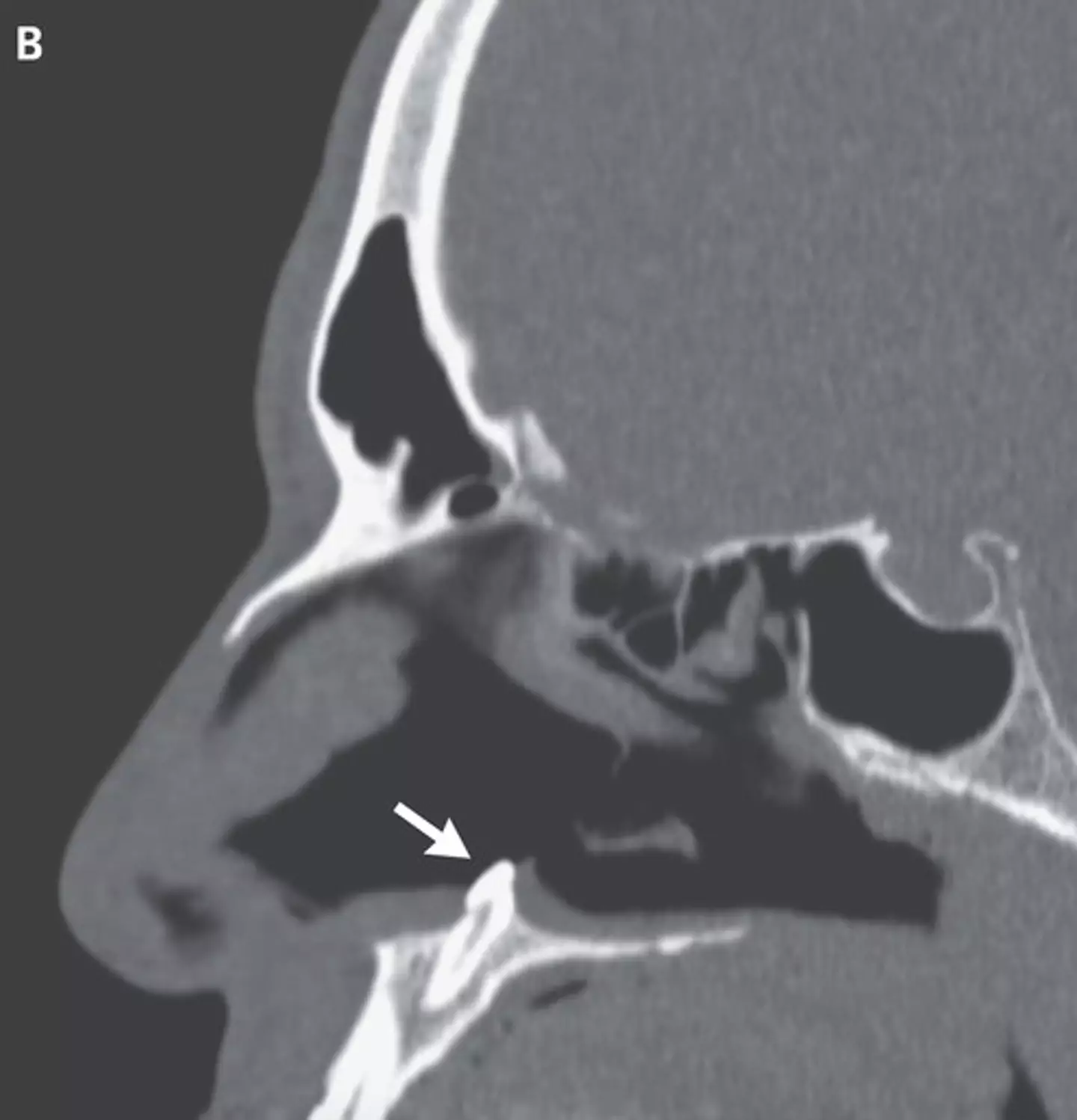
WARNING: This article contains graphic images
A man who had trouble breathing through his right nostril was shocked to discover he had a tooth growing in his nose.
The 38-year-old told a clinic he had been suffering breathing problems for a number of years.
The initial examination found he had a deviated septum (when the thin wall between his nasal passages was displaced to one side) and calcified septal spurs.
Advert
Despite the ongoing issue, he reported no facial trauma or facial abnormalities.
After performing a rhinoscopy, doctors were able to discover a white object lodged in his nostril.
It was then discovered that an ectopic tooth was, remarkably, growing in his nose.
Ectopic is a medical term meaning something that is in an abnormal place or position.
Ectopic body parts or functions are extremely rare, particularly for one to appear in the nose.
Advert

Sagar Khanna and Michael Turner wrote in The New England Journal of Medicine: "Physical examination of the nose showed a septal deviation, calcified septal spurs, and a 2-cm perforation in the posterior septum.
"On rhinoscopy, a hard, nontender, white mass was observed in the floor of the right nostril (Panel A).
"Computed tomography of the paranasal sinuses showed a well-defined, radiodense mass consistent with an inverted ectopic tooth in the nasal cavity (Panel B, arrow), which was thought to explain the obstructive symptoms and septal perforation.
"The tooth was removed during oral and otolaryngologic surgery by means of an intranasal approach and measured 14 mm in length. There were no postoperative complications.
Advert

"At follow-up three months after surgery, the patient’s symptoms of nasal obstruction had resolved."
The National Health Service (NHS) Queen Victoria Hospital in Grinstead, England wrote an information sheet about ectopic teeth.
It read: "Sometimes one or more teeth develop in the wrong position, end up getting stuck and remain buried in the jawbone under the gum.
"The most common ectopic teeth are the canine teeth in the upper jaw.
Advert
"The main risk of this is that the tooth can bump into the roots of other adult teeth and cause damage.
"Sometimes this can make them feel wobbly and eventually need to be removed. A cyst can also form around the buried tooth.
"Some people have a baby tooth left in their mouth, which has not been naturally pushed out by the buried adult tooth.
"This baby tooth over time may eventually be lost leaving a gap or require further dental treatment to replace it."
Topics: Health